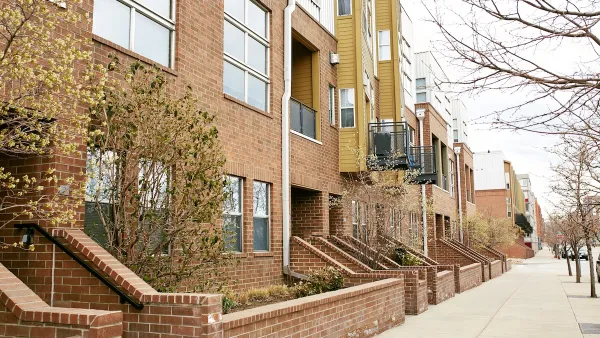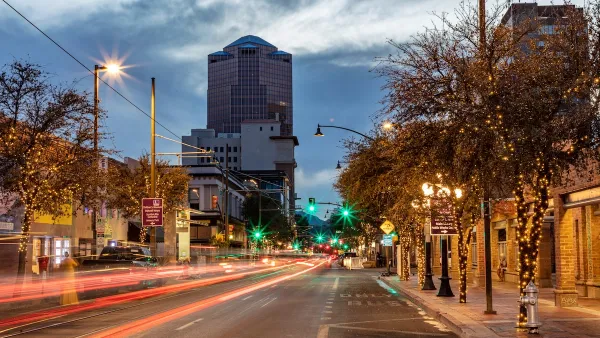Herb Caudill explains why the need to plan for a range of transportation modes and uses of space in urban environs is common sense - not part of a concerted assault on cars.
"The central fact about cars, from a planner's perspective, is that they
take up space. Lots of space. And this matters because space in cities
(a.k.a real estate) is scarce and therefore expensive." So says Caudill, who argues why the need for cities to rethink their relationship to the automobile derives from this simple fact, and not from a philosophical or moral argument against cars.
According to Caudill, our efforts over the past century to accommodate the growing space requirements of the automobile - with more freeways, more roads, and more parking - has failed for two primary reasons. "First," he says, "you can never build enough...Second, when you do make more space for cars you quickly start to
crowd out any other potential mode of transportation, especially
walking. All those parking lots and freeways and roads spread everything
else out so that the distances become too great for walking."
Because owning and driving an automobile isn't an option for everyone (in D.C., 1/3 of residents live in a car-less household), planning for the car effectively discriminates against a significant part of the population.
"So we have to take steps to increase the market share of
non-driving modes of transportation," concludes Caudill. "That's not a pro-car policy or an
anti-car policy, it's just a sensible response to the way the world is."
FULL STORY: Cutting dependence on cars isn't anti-car, it's common sense

National Parks Layoffs Will Cause Communities to Lose Billions
Thousands of essential park workers were laid off this week, just before the busy spring break season.

Retro-silient?: America’s First “Eco-burb,” The Woodlands Turns 50
A master-planned community north of Houston offers lessons on green infrastructure and resilient design, but falls short of its founder’s lofty affordability and walkability goals.

Delivering for America Plan Will Downgrade Mail Service in at Least 49.5 Percent of Zip Codes
Republican and Democrat lawmakers criticize the plan for its disproportionate negative impact on rural communities.

Test News Post 1
This is a summary

Test News Headline 46
Test for the image on the front page.

Balancing Bombs and Butterflies: How the National Guard Protects a Rare Species
The National Guard at Fort Indiantown Gap uses GIS technology and land management strategies to balance military training with conservation efforts, ensuring the survival of the rare eastern regal fritillary butterfly.
Urban Design for Planners 1: Software Tools
This six-course series explores essential urban design concepts using open source software and equips planners with the tools they need to participate fully in the urban design process.
Planning for Universal Design
Learn the tools for implementing Universal Design in planning regulations.
EMC Planning Group, Inc.
Planetizen
Planetizen
Mpact (formerly Rail~Volution)
Great Falls Development Authority, Inc.
HUDs Office of Policy Development and Research
NYU Wagner Graduate School of Public Service





























